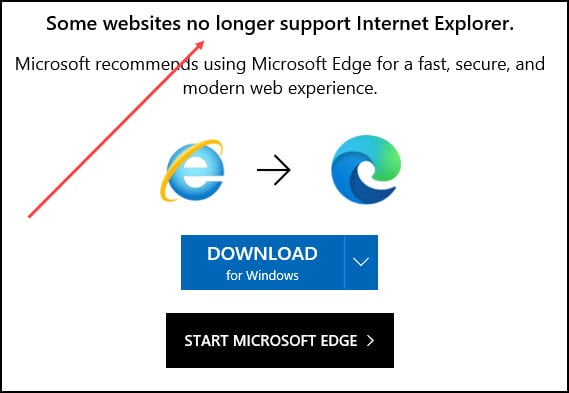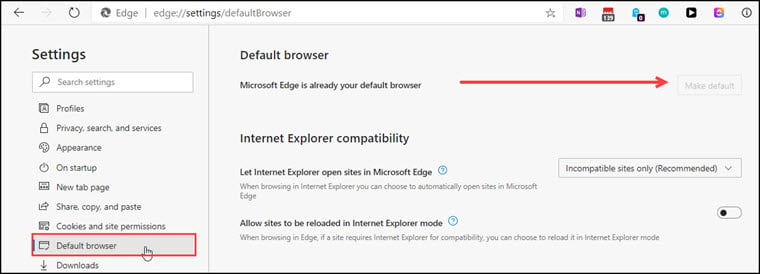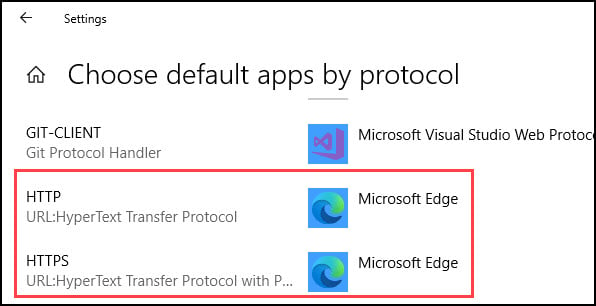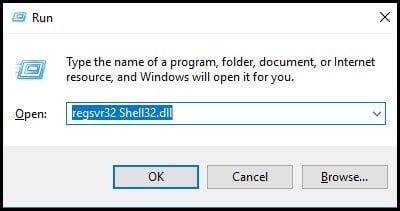Sometimes you don’t realize how much you appreciate a feature until it breaks, like Outlook hyperlinks. It’s frustrating because, you know, they’ve worked before. In this troubleshooting tutorial, I’ll explain some reasons your Outlook hyperlinks are not working and possible solutions. Incidentally, the problem may show up in other Microsoft Office 365 programs.
Before we start, I should mention this is what I call an onion repair process. Since I first wrote about this problem in 2008, many updates have been to Microsoft Windows, Outlook, and web browsers. Each combination could be an onion layer. As a result, you may have to try several fixes. At one time, Microsoft did have a “fix-it” repair tool, but they abandoned it. And, if you’re comfortable with the Windows registry, I might start with Fix 4.
Why Do Hyperlinks Stop Working in Outlook?
Over the years, I’ve not found one process that causes Microsoft Outlook links to break. The URL links broke for me the last time after I did a Microsoft Windows update and installed some beta software. Because I didn’t test my Outlook email in between the installations, I couldn’t tell which activity contributed to the problem. Fortunately, my Outlook auto-reply emails still worked.
I have noticed certain activities may break my Outlook hyperlinks, such as:
- Installing a Microsoft Windows update
- Installing or uninstalling web browsers
- Installing browser add-ons or extensions
- Installing various Outlook plugins or addins
- Using aggressive Windows Registry cleaners
- Installing beta software
- Your organization’s policies
- Browser hijacking.
Part of the issue is that many Windows programs, not just Outlook, are reliant in some way on web browsers. And many of us tend to have different browsers and switch between them. If you’re a recent Windows 10 user, you may have both Internet Explorer and Microsoft Edge.
And sometimes links don’t work by design. Microsoft Outlook also has a global setting that disables hyperlinks by default for email items classified as junk. The setting is under Home | Junk | Junk E-mail Options…
This setting is designed to protect you from phishing attempts and malware. If you click an email, you should get a security warning message telling you the message has been converted to plain text and links are disabled. To resolve this issue, drag the email from your junk email folder to your inbox.
Did Your Organization Supply Outlook?
If your organization provided your software, you should contact your System Administrator or help desk. This is probably the most efficient solution; they can help troubleshoot the cause. If you’re lucky, they may be able to fix this issue remotely.
One telltale sign is when you click a hyperlink, you’ll get one of the following error messages:
- This operation has been canceled due to restrictions in effect on this computer. Please contact your system administrator.
- Your organization’s policies are preventing us from completing this action for you. For more info, please contact your help desk.
Fix 1: Make Microsoft Edge the Default Web Browser
I can often fix my Outlook hyperlink problem by resetting Microsoft Edge to be my default Internet browser. I start with this step, even if I plan to use Firefox or Chrome as my browser. I choose this path because I’ve had better success, which takes me closer to my end goal. And if I call Microsoft, they suggest I change to Microsoft Edge anyway.
Also, if you’re still using Internet Explorer, it was sunsetted on June 15, 2022, according to Microsoft. Additionally, the software warns that some websites may no longer work with it.

To make Microsoft Edge your default browser,
- Open Microsoft Edge.
- In the browser address bar type: edge://settings/defaultBrowser

- Click the Make default button at the top.
- Close the Settings tab and Microsoft Edge.
- Reopen Outlook and test a hyperlink to see if the web page opens in Microsoft Edge.
Fix 2: Reset Microsoft Edge
Try the Reset settings option if you already use Edge as your default browser. Keep in mind, like all resets, you will lose some of your personal settings, such as your browser start page, search engine, etc. This takes your browser back to the default settings.
- Open Microsoft Edge.
- In the address bar, type edge://settings/reset.
- Under Reset settings, click Restore settings to their default values.
- On the Reset settings dialog box, click the Reset button.
- Close Edge.
- Reopen Outlook and test a hyperlink to see if the web page opens in Microsoft Edge.
Fix 3: Reset the URL File Types
If you’ve gotten to this part, I have to figure your Outlook hyperlinks are still broken. Don’t fret as I have another fix to try. My guess is someplace along the line, your file associations broke. This is the mapping Windows uses to associate a file type to a program. A common mapping might be .XLSX files with Microsoft Excel. In this case, we need to check HTTP protocol mappings.
To Check HTTP file associations,
- Press your Windows key + i. This will open your Settings panel.
- In the Find a setting textbox type protocol.
- In the search results, click Choose a default app for each protocol. This page may take a little while to build.
- Under Choose default apps by protocol, scroll down to HTTP and HTTPS.

- Make sure your app is set to Microsoft Edge.
- Close Edge and Outlook
- Test your Outlook hyperlink.
Fix 4: Verify HTML Registry Key Values
This fix does require people to hop into Windows Registry. Sometimes these registry values get reset by another program or get corrupted. As a matter of practice, I suggest you always make a registry file backup before changing data values. If you’ve never been in this database, I’d also suggest doing it with a friend who is comfortable with the area.
- Press your Windows key + r to open the Run dialog.
- Type regedit in the text box.
- Click OK.
- Click Yes on the dialog asking if you want Windows Registry to make changes.
- From the left pane, click HKEY_CLASSES_ROOT.
- Scroll down the menu till you see .html
- Click the entry. Your top bar should show Computer\HKEY_CLASSES_ROOT.html. (See image)
- Verify the (Default) entry has a Data value of htmlfile.

- If the value is not htmlfile, right-click on (Default) and select Modify.
- Input htmlfile in the Value data: field.

- Click OK.
- Restart Windows and test an Outlook link.
Fix 5: Reregister Windows DLL Files
While less likely, another solution is to reregister some of your DLL files. The process may sound intimidating, but it’s easy. There are 6 files to register based on your Outlook version. Some configurations use shdocvw.dll, and others use shdoc401.dll.
To reregister the DLL files,
- Close Microsoft Outlook.
- Press your Windows key + r.
- In the Open: textbox, type regsvr32 followed by a space and the file name.

- Click the OK button. You should see a message showing the process succeeded.
- Click OK to dismiss the message.
- Repeat the procedure for the other DLL files.
- regsvr32 Shdocvw.dll (Some system use Shdoc401.dll instead)
- regsvr32 Oleaut32.dll
- regsvr32 Actxprxy.dll
- regsvr32 Mshtml.dll
- regsvr32 Urlmon.dll
- regsvr32 Shell32.dll
- As before, test to see if your Microsoft Outlook hyperlink problem has been resolved.
Back to Your Favorite Web Browser (Optional)
Once you get the Outlook links to open in Microsoft Edge, you can change your default browser to Firefox, Chrome, or another browser if desired. This should roll down to Outlook so any embedded hyperlinks will open in the correct browser.
Hopefully, the suggestions above fixed your problem. I think as Microsoft retires Internet Explorer and makes Microsoft Edge the default browser, this problem will diminish. That’s not to say you won’t encounter hyperlinks not working in Outlook. It just means you can’t blame IE.
Broken Links in Other Office Apps
Recently, I got an email from a reader who said he had similar issues with Microsoft Excel. When he installed Windows 11, he disabled Internet Explorer as a standalone app. This made sense as the program was being retired, and he used Firefox. When he re-enabled IE, the Excel hyperlinks worked again.
